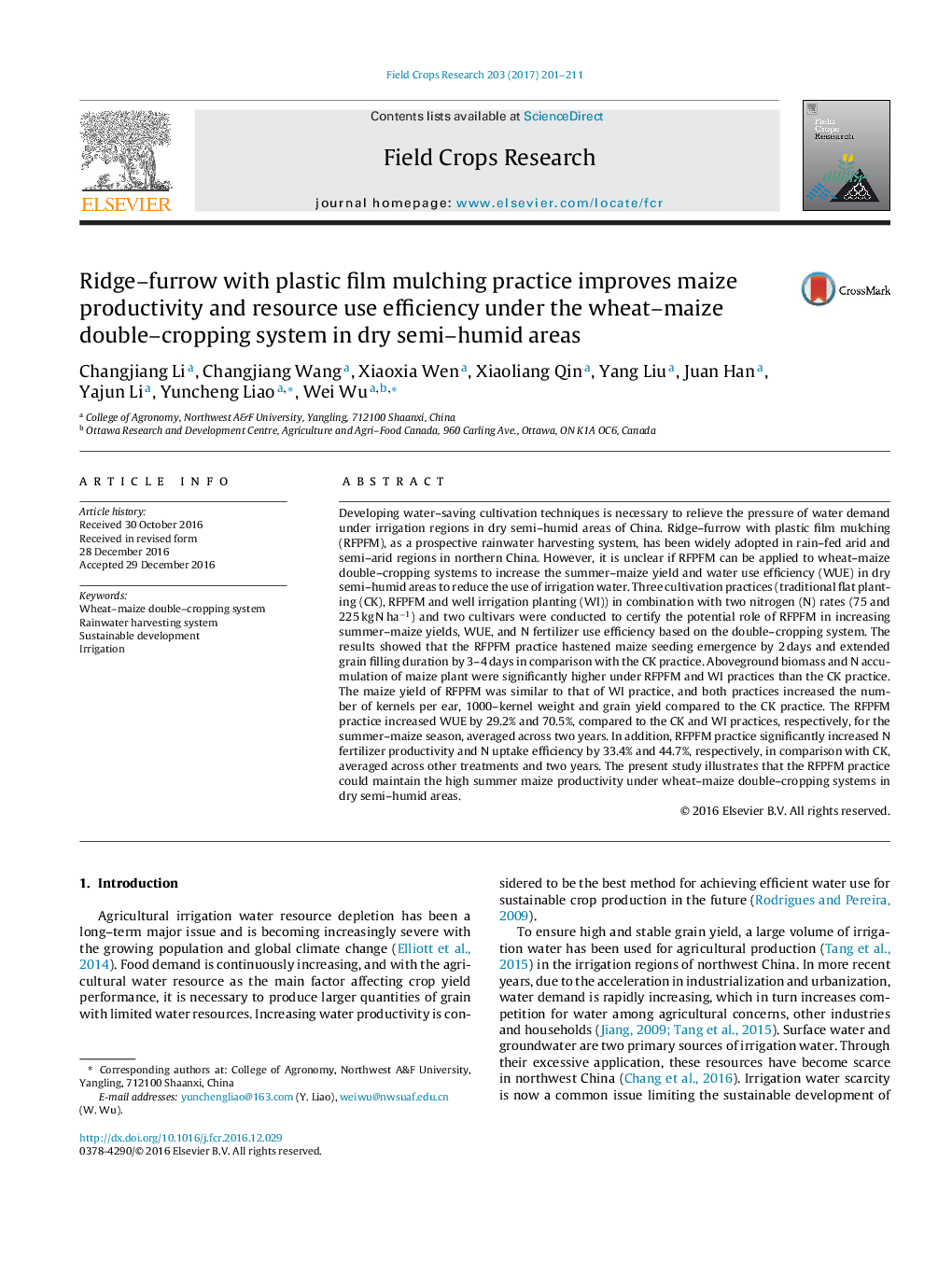| Article ID | Journal | Published Year | Pages | File Type |
|---|---|---|---|---|
| 5761479 | Field Crops Research | 2017 | 11 Pages |
Abstract
Developing water-saving cultivation techniques is necessary to relieve the pressure of water demand under irrigation regions in dry semi-humid areas of China. Ridge-furrow with plastic film mulching (RFPFM), as a prospective rainwater harvesting system, has been widely adopted in rain-fed arid and semi-arid regions in northern China. However, it is unclear if RFPFM can be applied to wheat-maize double-cropping systems to increase the summer-maize yield and water use efficiency (WUE) in dry semi-humid areas to reduce the use of irrigation water. Three cultivation practices (traditional flat planting (CK), RFPFM and well irrigation planting (WI)) in combination with two nitrogen (N) rates (75 and 225 kg N haâ1) and two cultivars were conducted to certify the potential role of RFPFM in increasing summer-maize yields, WUE, and N fertilizer use efficiency based on the double-cropping system. The results showed that the RFPFM practice hastened maize seeding emergence by 2 days and extended grain filling duration by 3-4 days in comparison with the CK practice. Aboveground biomass and N accumulation of maize plant were significantly higher under RFPFM and WI practices than the CK practice. The maize yield of RFPFM was similar to that of WI practice, and both practices increased the number of kernels per ear, 1000-kernel weight and grain yield compared to the CK practice. The RFPFM practice increased WUE by 29.2% and 70.5%, compared to the CK and WI practices, respectively, for the summer-maize season, averaged across two years. In addition, RFPFM practice significantly increased N fertilizer productivity and N uptake efficiency by 33.4% and 44.7%, respectively, in comparison with CK, averaged across other treatments and two years. The present study illustrates that the RFPFM practice could maintain the high summer maize productivity under wheat-maize double-cropping systems in dry semi-humid areas.
Related Topics
Life Sciences
Agricultural and Biological Sciences
Agronomy and Crop Science
Authors
Changjiang Li, Changjiang Wang, Xiaoxia Wen, Xiaoliang Qin, Yang Liu, Juan Han, Yajun Li, Yuncheng Liao, Wei Wu,
